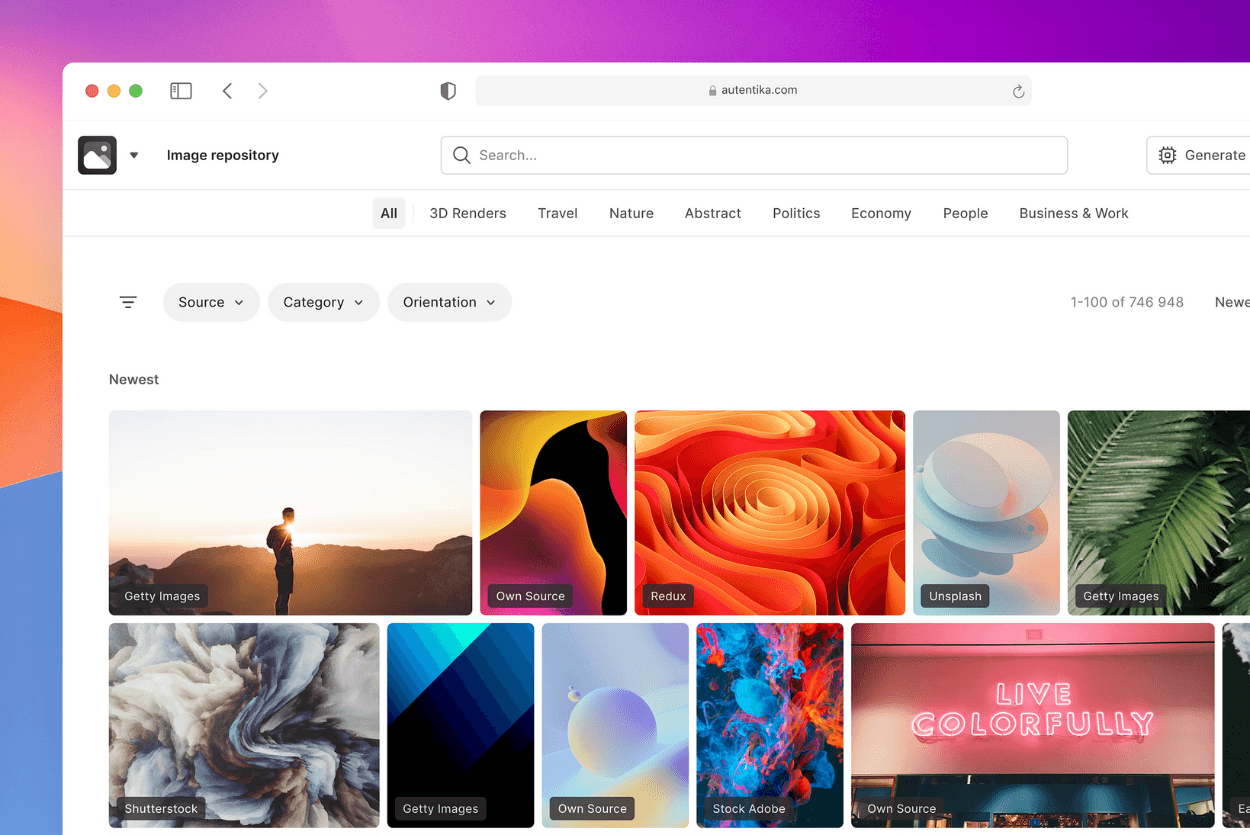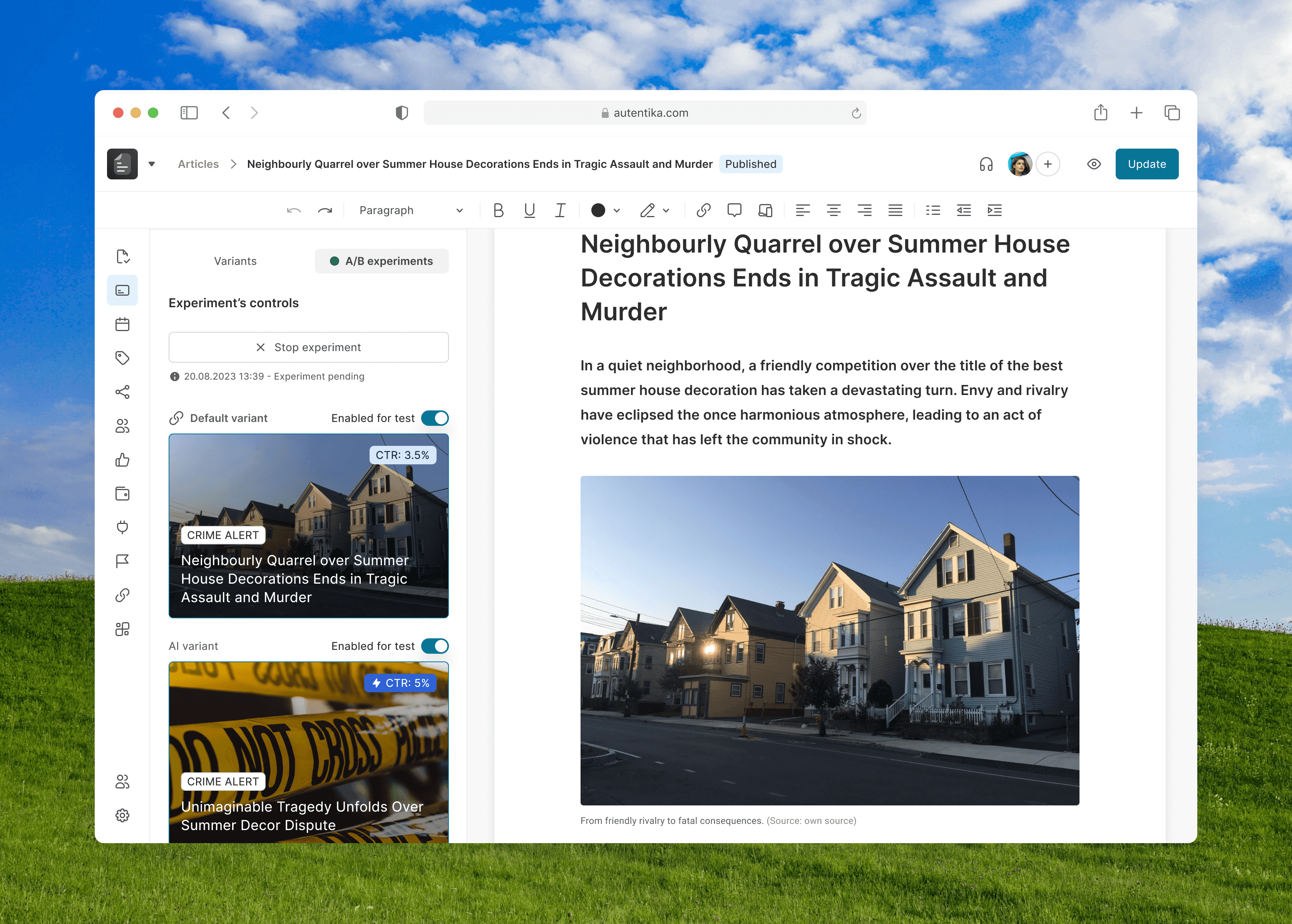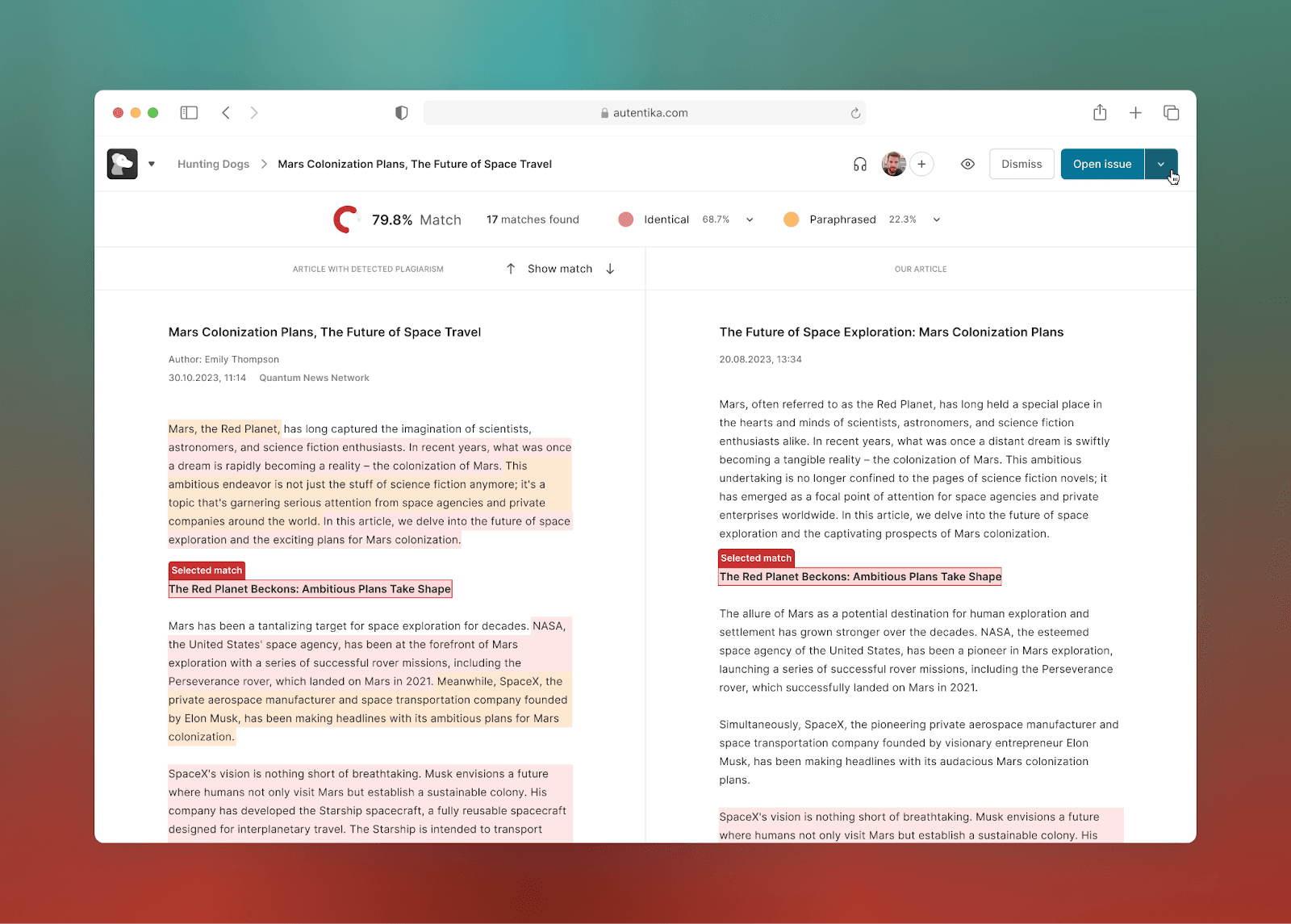Paywall optimization with AI: A POC for premium content management
7 Oct 2024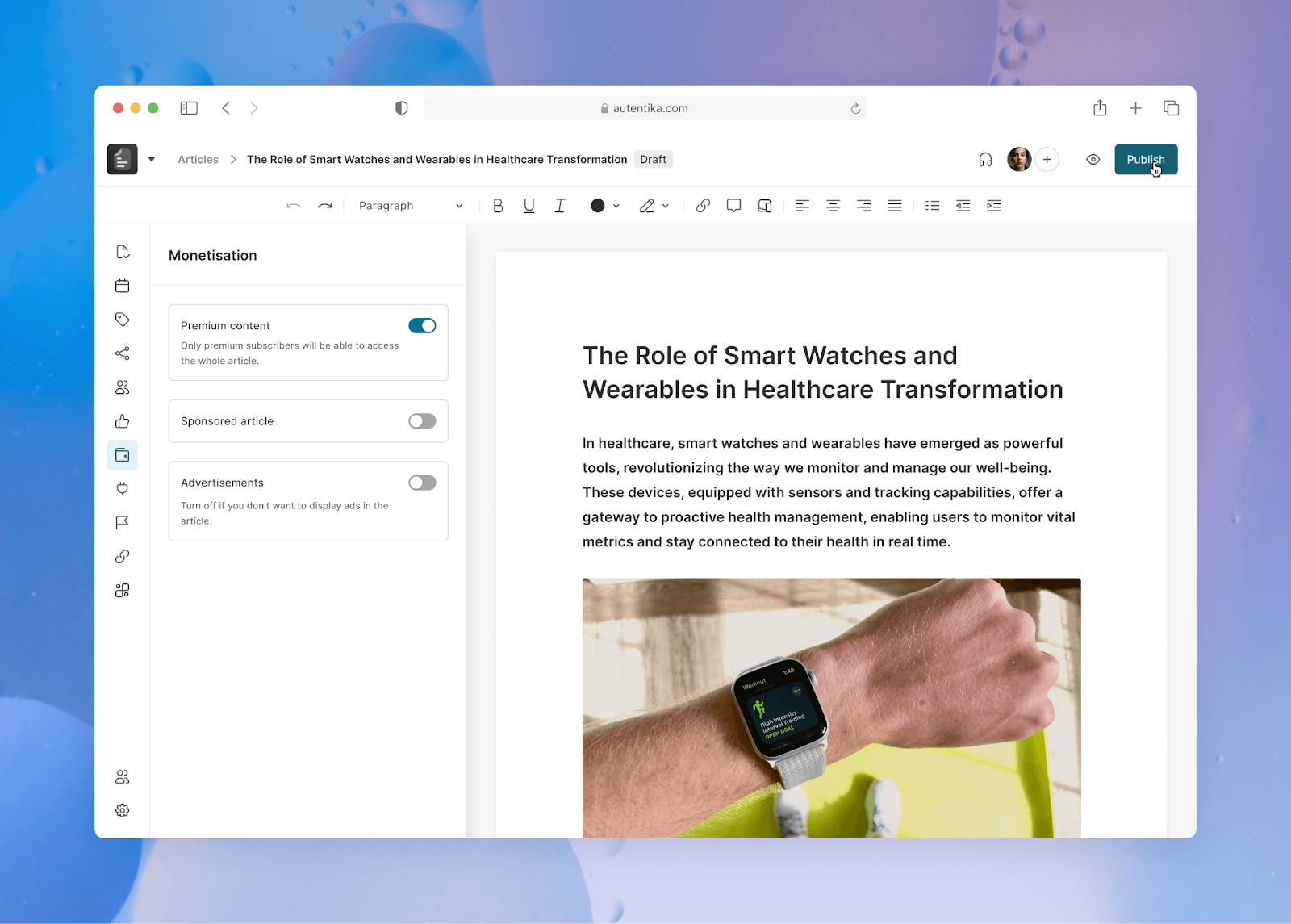
After launching over 30 proofs-of-concepts at the intersection of AI and journalism, we further explore what’s possible with new PoCs designed to enhance newsroom efficiency, content quality, and audience engagement.
We’re introducing a fresh set of proof-of-concept features to demonstrate how AI can further assist journalists and editors in their daily work. Let’s explore how these features when implemented into editorial tools, can help journalists and editors.
In this article, we describe an AI-assisted paywall management. Check out our blog for more ideas!
1) Article is marked as premium content
A journalist writes and finalizes an article intended for premium readers. After reviewing the piece, they mark it as "premium content," setting the stage for AI-assisted paywall placement.

The user marks the article as premium content and publishes it.
2) AI checks paywall
Before the article goes live, the AI alerts the journalist to check the paywall position. It suggests a particular location within the article—generally after 10-20% of the text or at a point where the story becomes particularly engaging, such as the introduction of a compelling narrative hook.
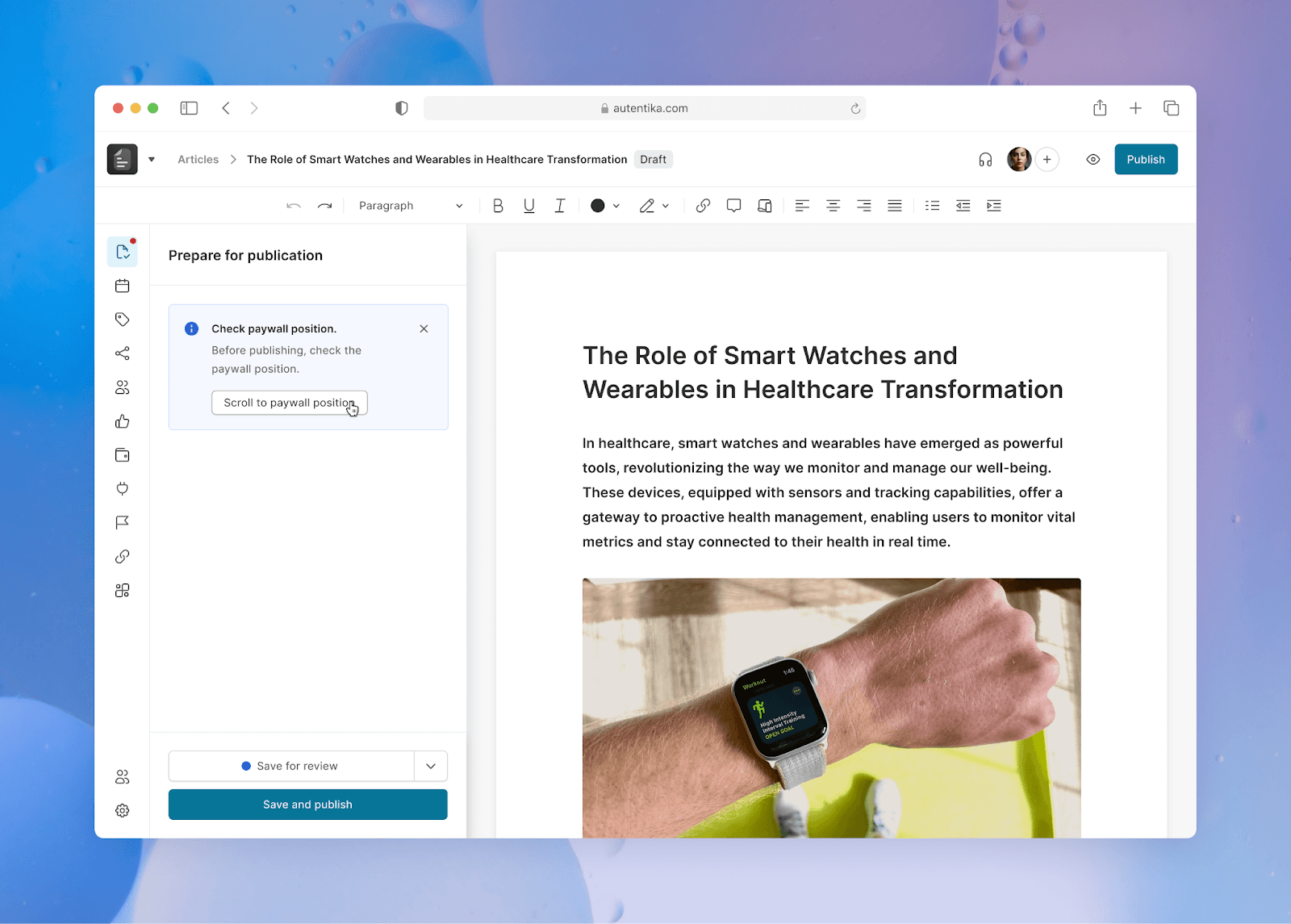
AI alerts the user to check the paywall position before publication.
3) Automatic paywall placement with conversion prediction
Based on the content’s structure, pacing, and the overall engagement level, the AI automatically places the paywall at the optimal location. For example, if the article introduces a compelling fact or surprising narrative element in the second paragraph, the AI will position the paywall just after this point, maximizing reader curiosity.
For example, AI places the paywall after the third paragraph, right after a key quote from an industry expert. The system predicts a 1.2% conversion rate based on data from similar articles.
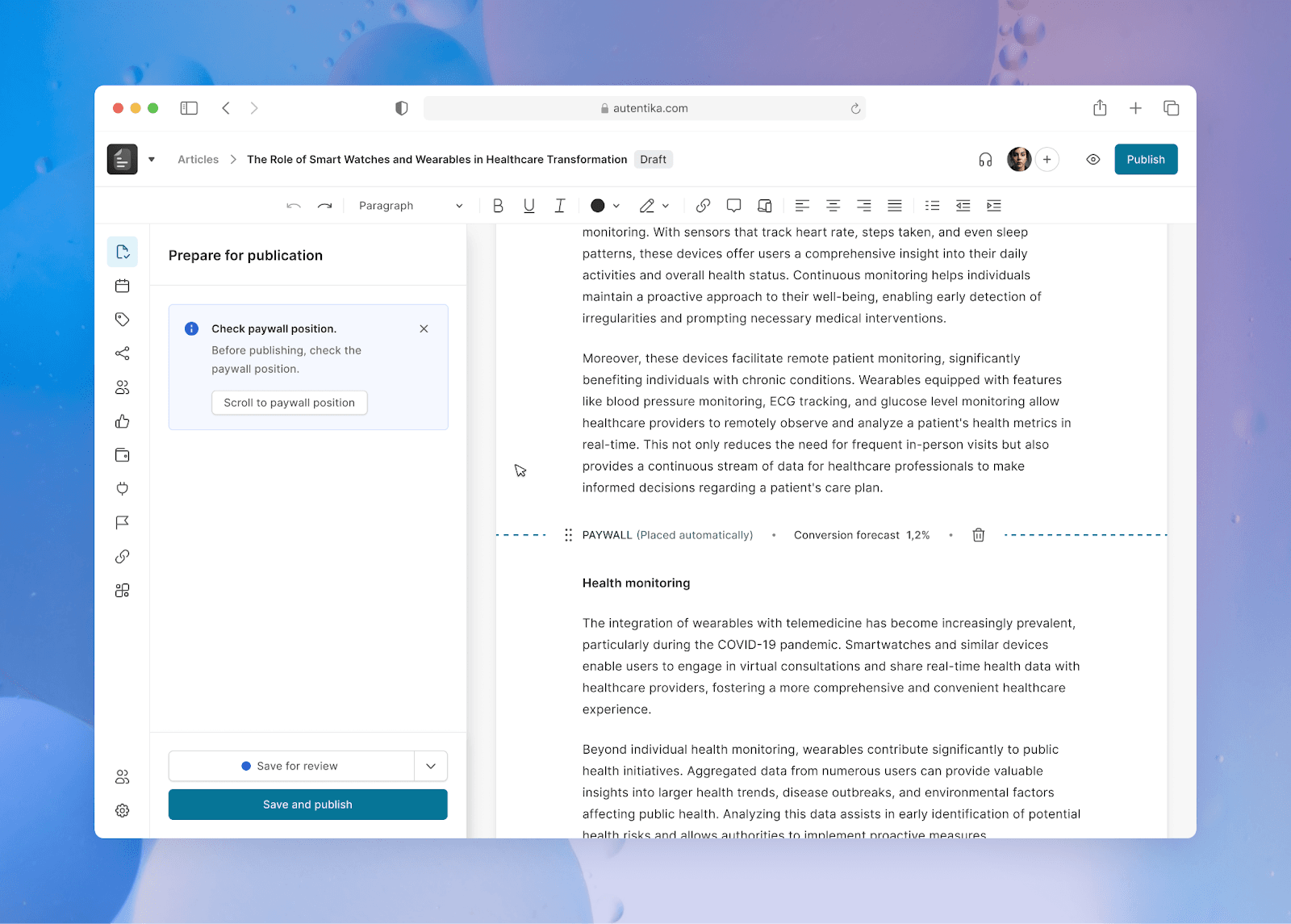
AI places the paywall position automatically and predicts a 1.2% conversion rate. A label indicating “Placed automatically” appears.
4) Journalists' review
The journalist is given the option to accept the AI’s suggested paywall placement or manually adjust it. If the AI’s positioning seems off, they can click on the paywall marker and drag it to a different paragraph.
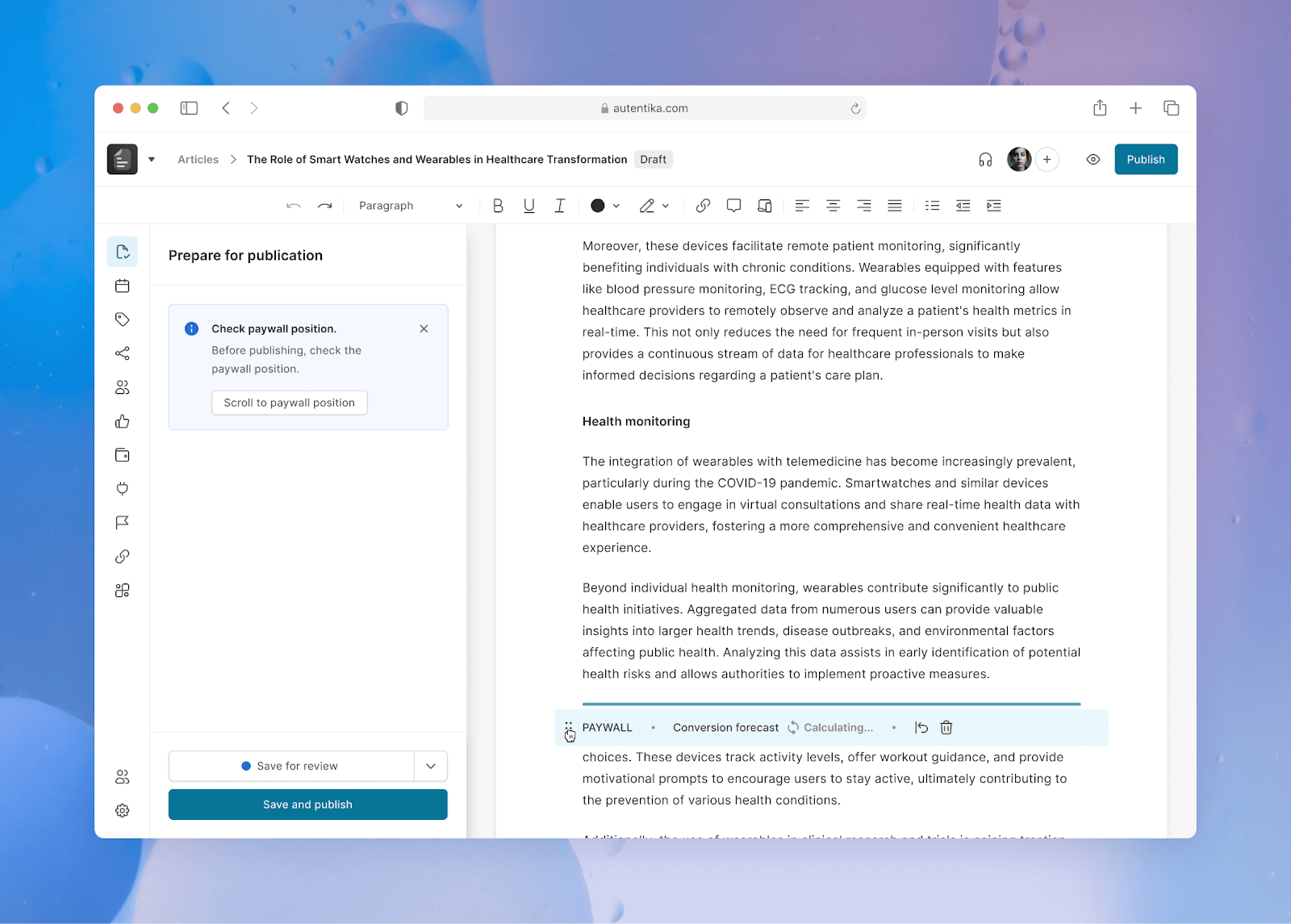
The journalist can either accept this suggestion or manually adjust the paywall’s position within the content.
5) System alert
As the journalist drags the paywall to a new position, the system alerts them that the new placement might lead to a lower conversion rate.
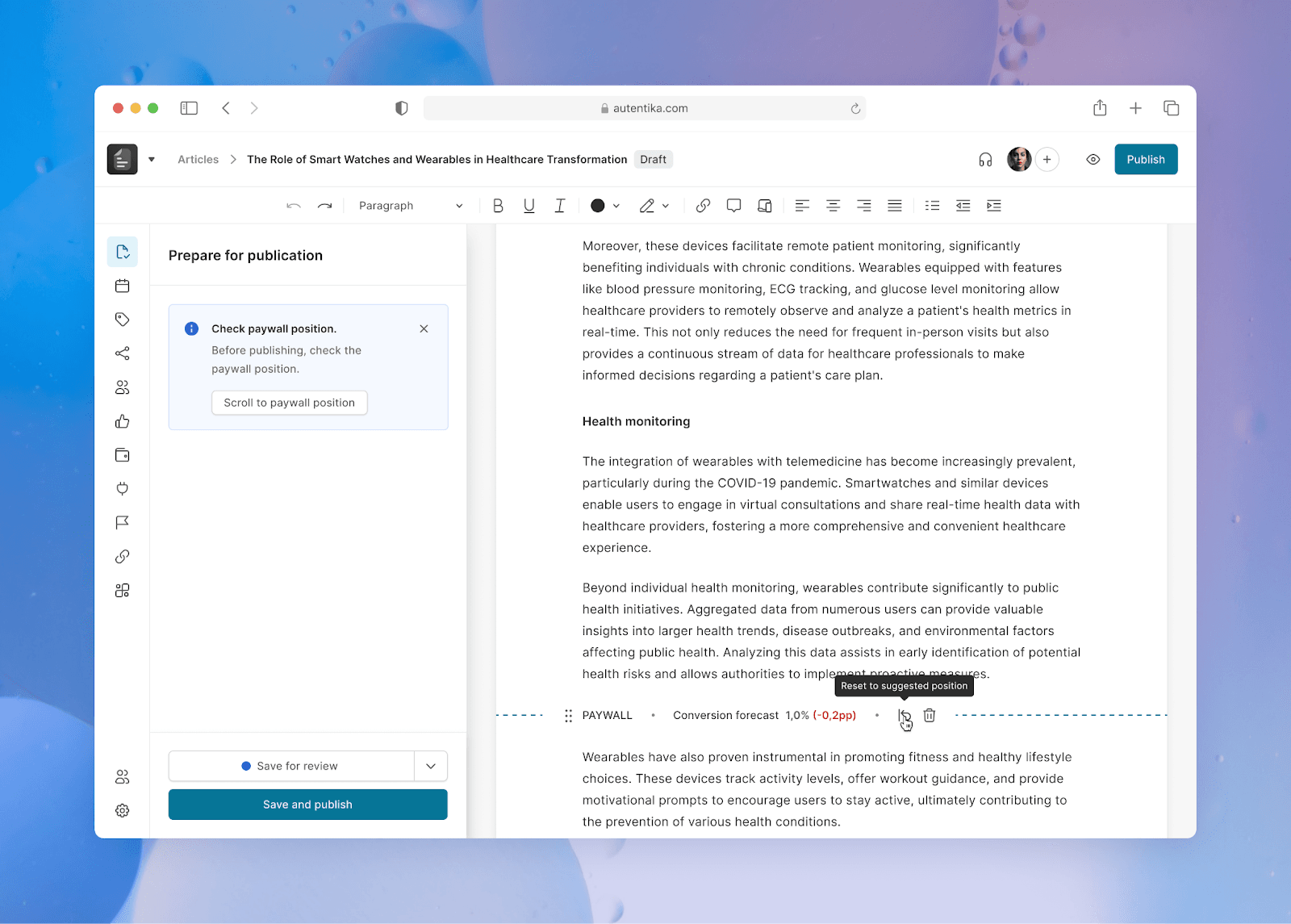
The user receives a new conversion forecast. Since it’s lower than before, the user resets the paywall line to its original position.
6) Final decision
The journalist moves the paywall back to the AI’s recommended spot to maintain the higher predicted conversion rate.
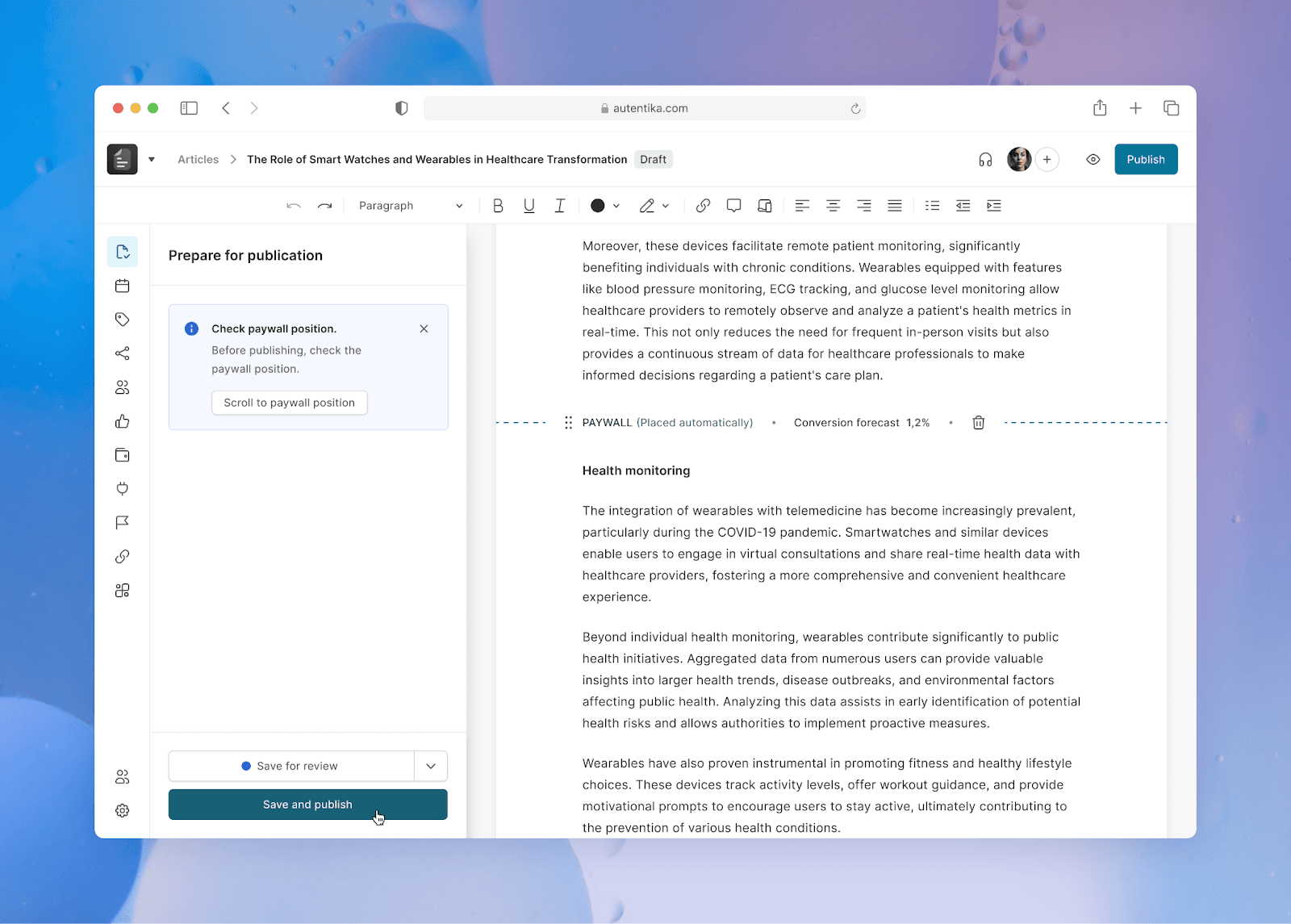
The user saves and publishes the article.
This approach combines AI’s ability to analyze reader behavior and content engagement with the journalist's intuition and experience, creating a dynamic and flexible system. By allowing both automatic and manual paywall placement, the platform empowers journalists to make informed decisions about maximizing their content’s revenue potential.
